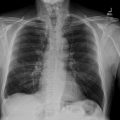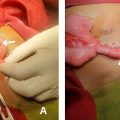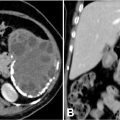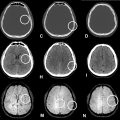Abstract
VACTERL associations are typically diagnosed in neonates and infants, with adult presentations being rare. This case report presents an adult patient diagnosed with VACTERL association following the discovery of a significant patent ductus arteriosus.
Introduction
VACTERL association is a group of congenital malformations that affect multiple body systems. These anomalies include: vertebral irregularities (V), anal atresia (A), cardiac defects (C), tracheoesophageal fistula (TE), which may or may not be accompanied by esophageal atresia, renal dysplasia (R), and limb abnormalities (L). Initially termed VATER—before the inclusion of “C” and “L”—in 1973, its prevalence is estimated at 1 in 7,000-40,000 live births, with significant variation [ ].
Case presentation
We report a case of a 27-year-old male patient who presented to the cardiology outpatient department (OPD) with a 3 day history of worsening breathlessness and cough. On clinical evaluation, he was conscious, well-oriented and exhibited an increased respiratory rate of 28 breaths/minute with oxygen saturation of 93% on room air—New York Heart Association (NYHA) class IV. Routine blood tests revealed mild relative neutrophilia and polycythemia. His medical history included recurrent respiratory tract infections since childhood.
A chest radiograph demonstrated gross cardiomegaly and prominent pulmonary vessels in bilateral lung fields ( Fig. 1 ).
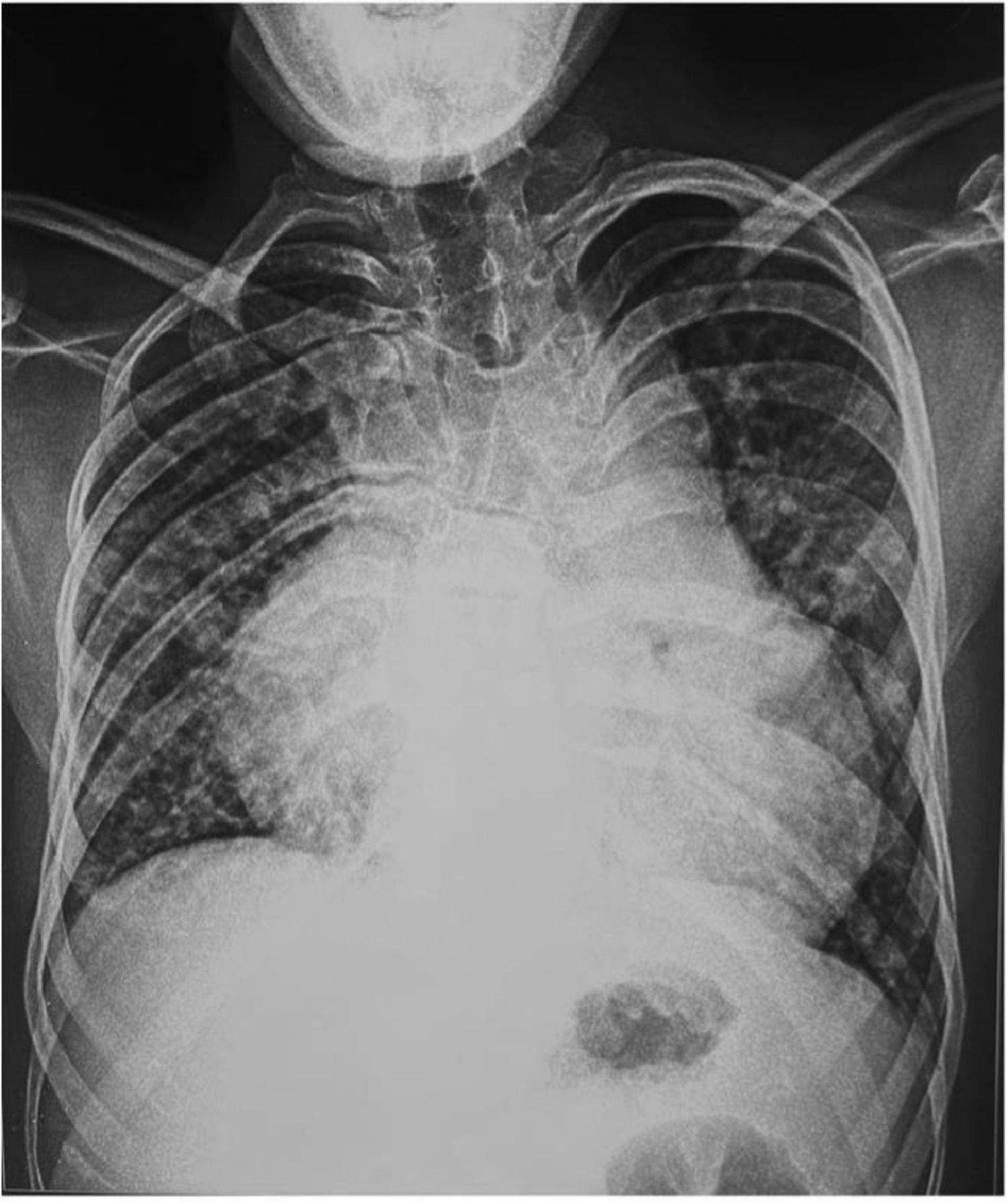
A 2D echocardiogram (ECHO) revealed global hypokinesia, dilated cardiac chambers, D shaped left ventricle, severe ventricular dysfunction, and grossly enlarged pulmonary artery (PA). The following echocardiographic parameters were recorded:
- –
Left ventricular internal dimension at end-diastole (LVIDd) – 6.4 cm.
- –
Left ventricular internal dimension at end-systole (LVIDs) – 4.4 cm.
- –
Ejection fraction (EF) – 30%.
- –
Interventricular septum thickness at end-diastole (IVSd) – 1.43 cm.
A diagnosis of dilated cardiomyopathy and severe pulmonary artery hypertension was established.
The patient was referred to the Department of Radiodiagnosis for a computed tomography (CT) pulmonary angiogram which showed gross cardiomegaly (cardiothoracic ratio ∼0.68), dilated main PA (∼40.5 mm), right PA (∼21 mm) and left PA (∼30 mm) ( Fig. 2 ).
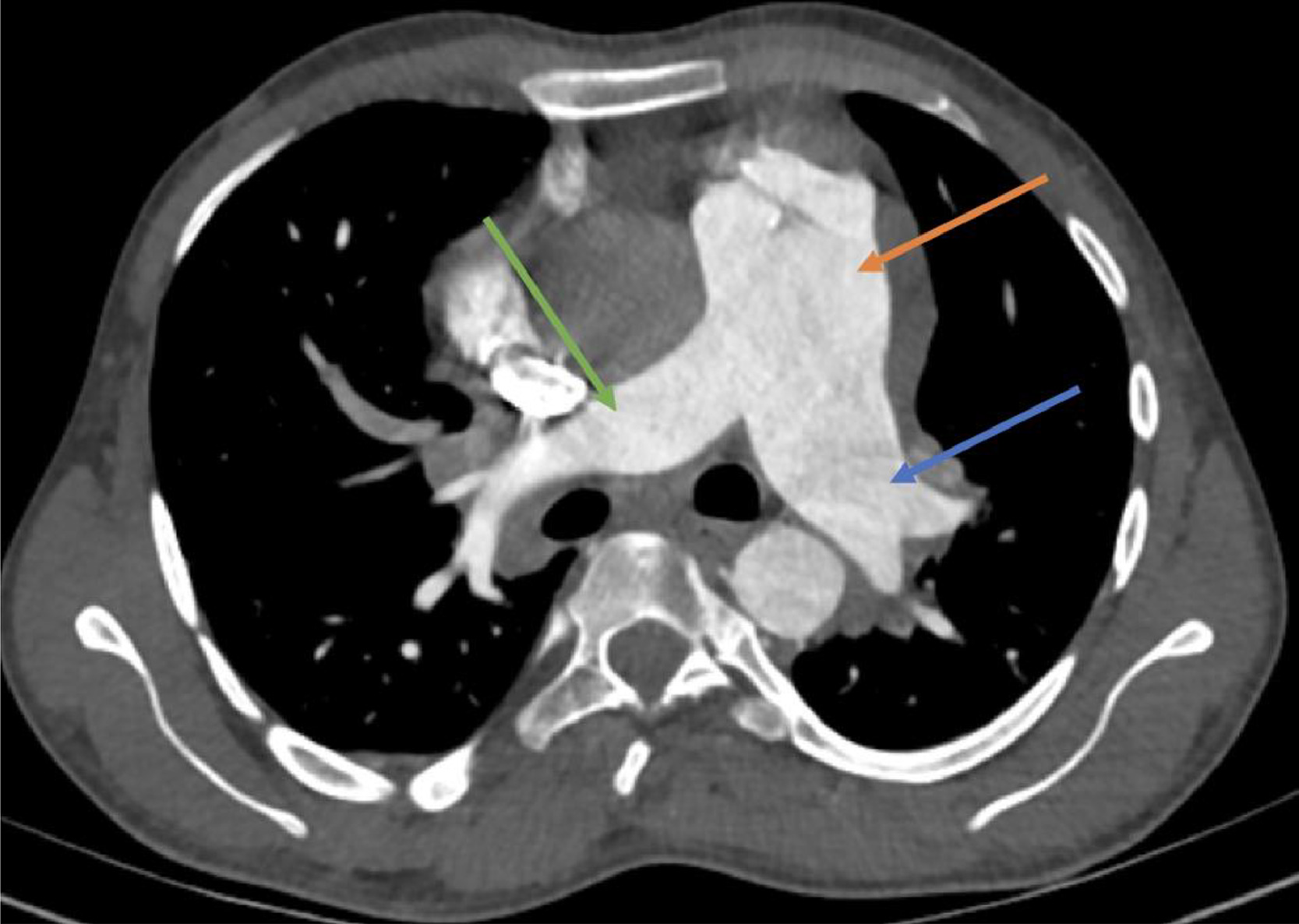
An anomalous vascular connection (∼2.2 cm in width) was identified between the main PA and the distal arch of the aorta with contrast shunting into the descending thoracic aorta during the arterial phase. This finding was consistent with a patent ductus arteriosus (PDA) ( Figs. 3 A and B, Fig. 4 ).
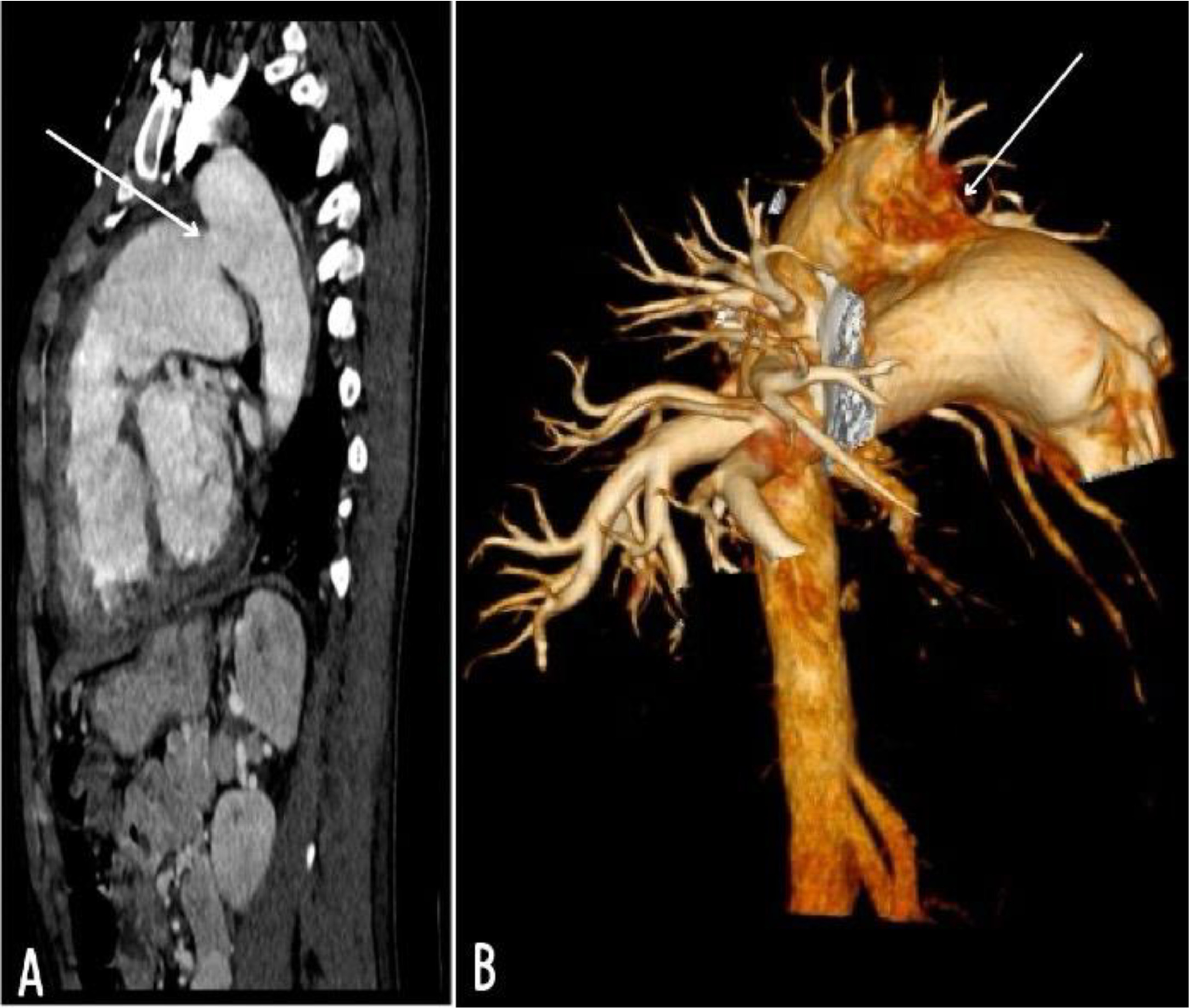
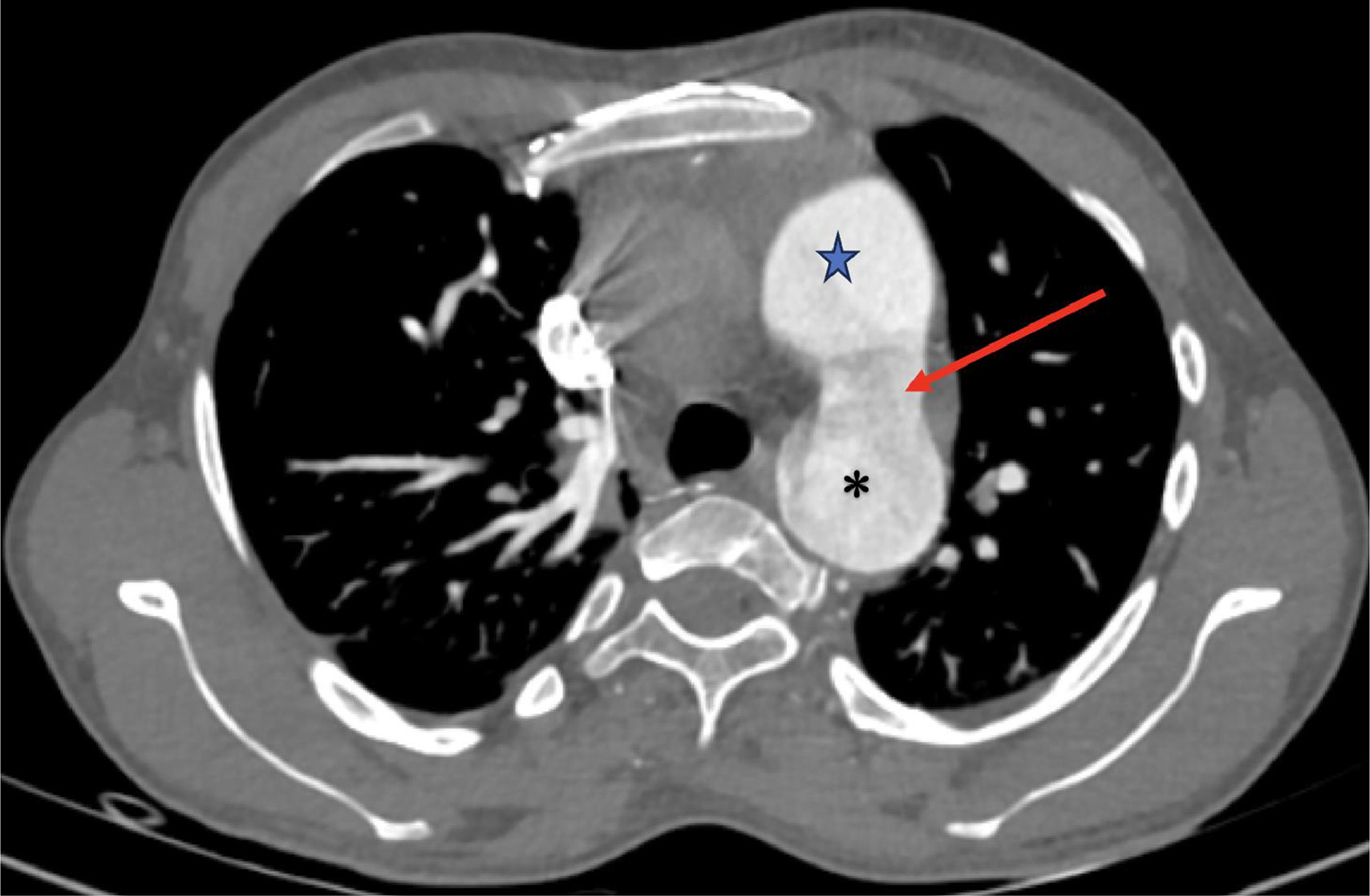

Stay updated, free articles. Join our Telegram channel

Full access? Get Clinical Tree



